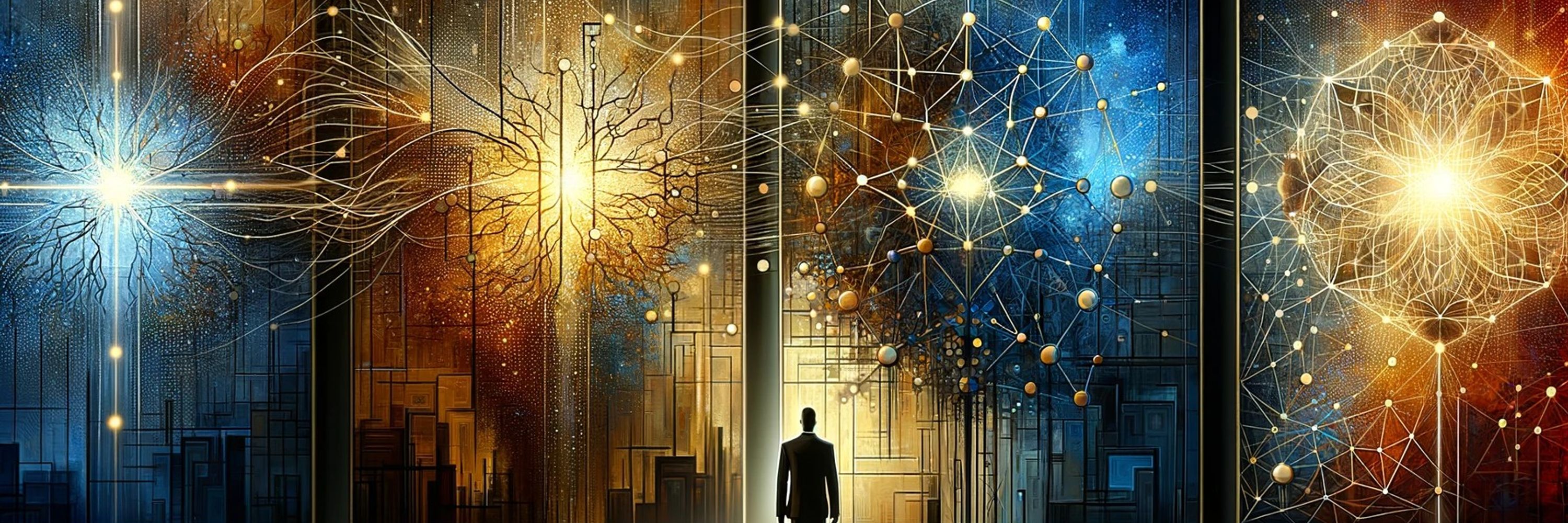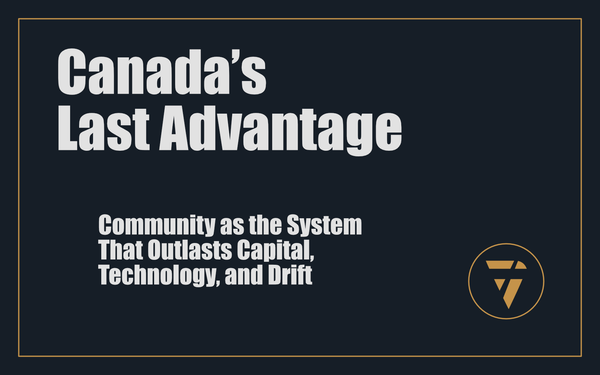Calitropic Imperative

Why Humans Need Beauty Like Trees Need Light
A tree doesn't grow in just any direction. It doesn't randomly decide which way to extend its branches. It seeks. It moves. It follows an invisible to us, fundamental law: the pull toward light. Without light, the tree becomes stunted, twisted, desperate. But when it finds the sun, it thrives. It reaches, expands, and becomes what it was always meant to be.
Human beings follow a similar law, though we rarely acknowledge it. We move toward beauty. We are drawn to it instinctively, just as a tree is drawn to the sun. But in the modern world, we have made a dangerous mistake: we have convinced ourselves that beauty is optional. A luxury. Something frivolous, to be pursued only after “real” needs—efficiency, profit, productivity—have been met.
This is a fundamental misunderstanding of what beauty is.
Beauty is not an afterthought. It's not a garnish on the plate of human existence. It is nourishment. It is structure. It is a guiding force that has shaped civilizations, driven innovation, and defined our deepest emotional and intellectual experiences. Without it, we do not merely live in an uglier world—we wither within it.
This is the essence of the Calitropic Imperative: the idea that beauty is not merely a preference, but a necessity, a gravitational force that pulls us toward growth, fulfillment, and meaning. And just as we would never deprive a tree of light and expect it to flourish, we must stop depriving ourselves of beauty, and expecting to thrive.
Calitropic is a concept from the work of AJ Schlechten.

The Modern Crisis of Ugliness
Look around any major city, and you will see the results of a society that has forgotten the necessity of beauty. We have built our world for function, cost-cutting, and efficiency—but rarely for inspiration.
- Architecture has become cold and lifeless. The grand cathedrals, ornate courtyards, and lovingly crafted public spaces of the past have given way to brutalist office blocks, endless parking lots, and cheap, disposable structures designed with no consideration for their emotional or cultural impact.
- Products are designed to be consumed, not cherished. In an age of mass production, beauty is secondary to speed and scalability. Handmade craftsmanship has been replaced by plastic uniformity, and the objects that fill our lives are disposable, not enduring.
- Digital spaces have become overwhelming and soulless. Algorithms dictate what we see, filling our screens with content optimized for engagement rather than enrichment. The internet, once a place of exploration and creativity, has become a wasteland of overstimulation and superficiality.
This crisis of ugliness is not just an aesthetic problem—it's a psychological, social, and economic one. Studies consistently show that environments rich in beauty—whether natural or man-made—reduce stress, enhance cognitive function, and improve overall well-being. Conversely, exposure to chaotic, visually unappealing, or soulless environments leads to higher levels of anxiety, depression, and disconnection.
We have treated beauty as extra, and in doing so, we have created a world that feels empty.
Reclaiming Beauty: A Strategy for Business, Design, and Society
If we recognize that beauty is as fundamental to human flourishing as light is to a tree, then the next step is clear: we must reintegrate it into every aspect of modern life—our businesses, our cities, our social structures, and our digital spaces.
1. Beauty as a Business Imperative
The most successful companies in the world understand that aesthetics are not an afterthought—they are a competitive advantage. Apple, Tesla, and luxury brands across industries have built empires not just on function but on form. The elegance of a product is not incidental; it creates an emotional connection, elevates the user experience, and reinforces brand loyalty.
Businesses that embrace Calitropic principles can integrate beauty in the following ways:
- Design with intention. Prioritize aesthetic appeal in product development, packaging, and user interfaces. A product that is beautiful is a product that people want to own, use, and share.
- Create workspaces that inspire. Office environments should be designed for psychological well-being—natural light, organic materials, and visually engaging spaces increase employee happiness and productivity.
- Craft meaningful brand storytelling. People are drawn to stories that are told beautifully—whether through elegant visuals, compelling narratives, or immersive experiences. Brands that understand this create deeper emotional connections with their audiences.
2. The Return of Beautiful Cities
Urban environments should not be built purely for cost efficiency—they should be built to uplift. Cities that integrate beauty into their infrastructure become hubs of culture, creativity, and economic growth.
- Public spaces must prioritize aesthetics. Parks, plazas, and streets should be designed for human experience, with attention to flow, symmetry, and greenery. Studies show that beautiful public spaces encourage social interaction and foster a sense of community.
- Architecture must move beyond utility. Buildings should be designed with artistic ambition, not just efficiency. Thoughtful materials, timeless design, and integration with nature create environments where people want to live and work.
- Urban planning should embrace mixed-use beauty. Walkable neighbourhoods, cultural districts, and thoughtfully curated commercial spaces lead to more vibrant, engaged communities.
3. Social Structures Built Around Beauty
A society that values beauty creates stronger, healthier citizens. The principle of CaliTropic should be embedded in our education, governance, and cultural policies.
- Education must include aesthetics as a core subject. Art, music, and design should not be considered secondary to math and science. Creativity fuels innovation, and an appreciation for beauty enhances critical thinking.
- Government investment in culture should be prioritized. Public funding for museums, galleries, and artistic initiatives fosters national identity and preserves cultural heritage.
- Social media and digital spaces must be reimagined. Platforms should be designed to enrich, not just engage. Algorithms should prioritize meaningful content over clickbait, and user interfaces should be visually harmonious rather than overstimulating.
Moving Toward the Light
We are at a turning point. We can continue down the path of soulless efficiency, designing our world for cost and speed rather than inspiration and meaning. Or we can turn toward the light.
Just as a tree will find its way toward the sun, we must actively seek out and create beauty in our own lives and societies. We must demand it in our cities, cultivate it in our businesses, and prioritize it in our personal environments.
- Support businesses that value craftsmanship and aesthetic integrity. Choose quality over quantity.
- Advocate for beautiful public spaces. Push for thoughtful urban planning in your city.
- Curate beauty in your own life. Fill your home, your wardrobe, your digital spaces with things that inspire and uplift you.
- Create. Whether through art, music, design, or simple daily rituals, contribute to the beauty of the world rather than passively consuming.
The Calitropic Imperative is not just a concept—it's a recognition of something we have always known but have too often ignored. We need beauty the way a tree needs light. And just as trees shape the landscape as they reach toward the sun, we, too, shape our world as we move toward the beautiful.
The only question is: will we lean into it, or will we let ourselves wither?
This is what I’m working on. Tell me what you think, I enjoy the conversation! Subscribe and follow the work in real time.
Thanks!
B

Humans need beauty like trees need light. It’s not indulgence, it’s survival. A city, a business, a life without beauty withers. Build for inspiration, not just function. Turn toward the light.
PS -







